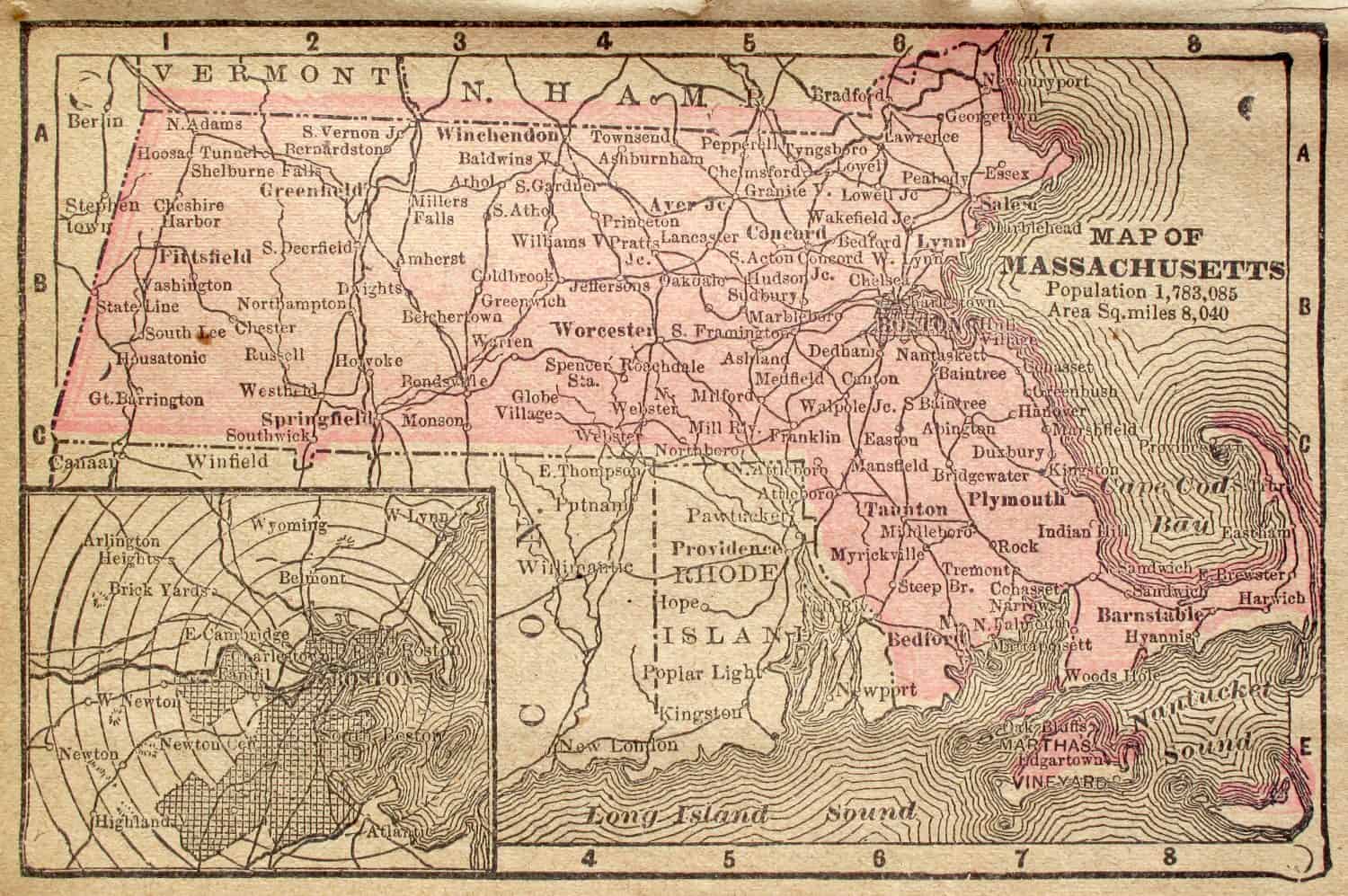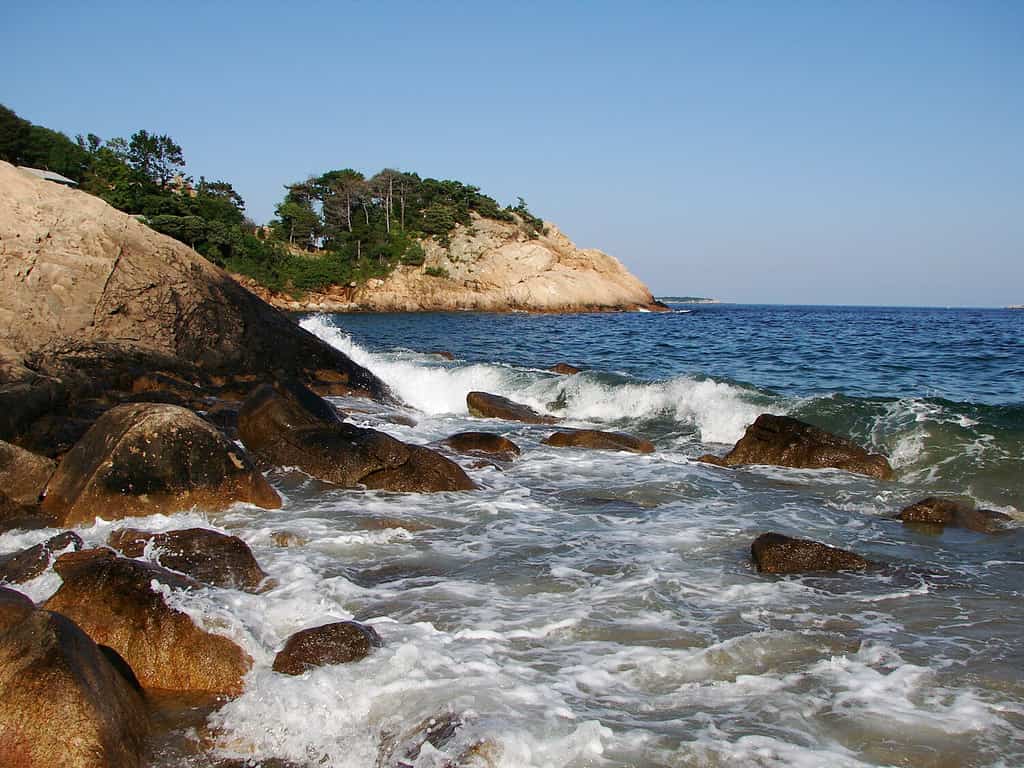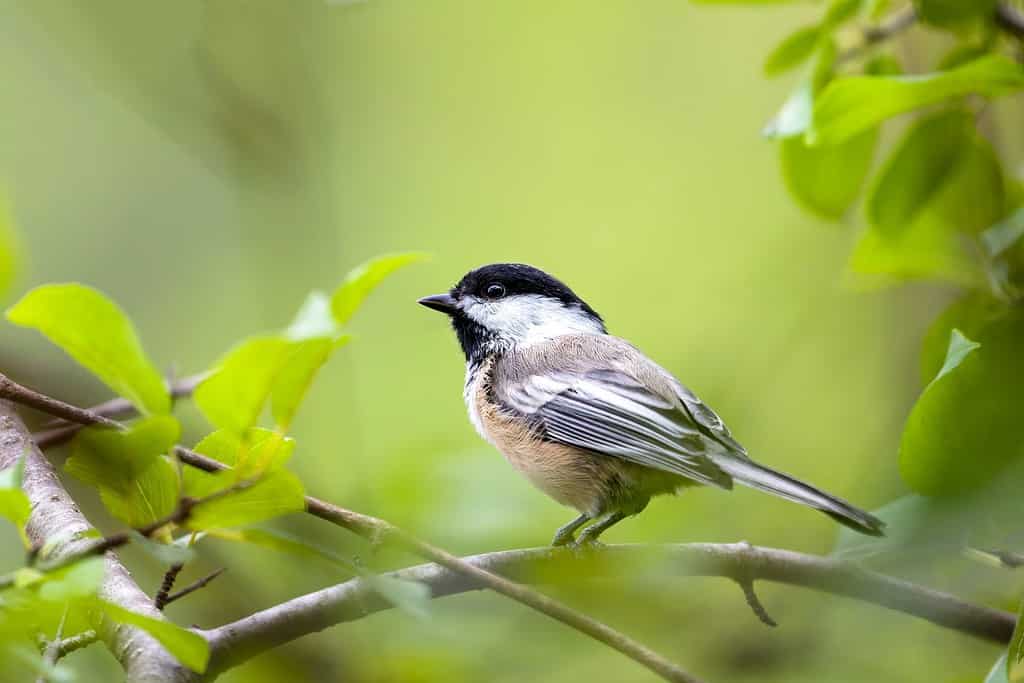Massachusetts is one of the original 13 colonies and the second largest of the six New England states. Located in the northeast corner of the U.S., Massachusetts has been at the center of some of the most significant events in U.S. history. It’s where the first Thanksgiving occurred, where the Boston Tea Party took place, and it’s the home state of the 35th president, John F. Kennedy.
Despite the state’s big role in U.S. history, it’s one of the smaller states in the nation. In this article, we will explore the state while answering the question, how tall is Massachusetts?
How Tall is Massachussetts?

Massachusetts is 110 miles tall from north to south.
©Kellis/Shutterstock.com
With a height of 110 miles from north to south, Massachusetts is slightly taller than Delaware, which stretches 96 miles from north to south. It’s more than double the length of Rhode Island, which measures 48 miles from top to bottom.
Overall Size of Massachusetts
The total area of Massachusetts is 10,554 square miles, making it the seventh smallest state in the nation. Over 26% of that area, or 2,754 square miles, is water. It’s similar in overall size to Hawaii, which is 10,932 square miles.
Becoming Part of the United States
One of the original 13 colonies, Massachusetts, ratified the U.S. Constitution in 1787. It was the sixth colony to become a state. Originally, the area that is now Maine was part of Massachusetts. However, Maine petitioned for statehood in 1819 and was admitted as a separate state in 1820.
Geography of Massachusetts

Massachusetts’ Singing Beach at Manchester-by-the-Sea is named for the sand that squeaks under your feet as you walk across it.
©Scott Terrasi/Shutterstock.com
Massachusetts is bordered by the Atlantic Ocean to its east, Vermont and New Hampshire to the north, Rhode Island and Connecticut to the south, and New York to its west.
The eastern coast of northern Massachusetts was created by glaciers retreating thousands of years ago. The coastline is home to both soft, sandy beaches and rocky shores. In the center of the state are gently rolling hills and flowing streams. The west of Massachusetts is mountainous, including the tallest mountain in the state, Mount Greylock.
Wildlife in Massachusetts

The
chickadee
is the state bird of Massachusetts.
©Manu M Nair/Shutterstock.com
There is a variety of wildlife found in Massachusetts. The state is home to 16 national parks plus many wildlife refuges and state parks. Furthermore, off the coast of Massachusetts are diverse marine habitats.
Some of the mammals commonly found in the state include white-tail deer, weasels, beavers, badgers, black bears, bobcats, coyotes, and even the occasional moose. Some of the reptiles and amphibians living in Massachusetts include copperhead snakes, American bullfrogs, snapping turtles, eastern garter snakes, and five-line skinks.
Among the marine animals and fish living off the coast are Atlantic sturgeons, gray seals, great white sharks, jellyfish, humpback whales, blue whales, and dolphins. Finally, many birds can be found in the state, including finches, owls, bluebirds, Eastern whip-poor-wills, herons, waterfowl, migratory birds, oystercatchers, and plovers.
The photo featured at the top of this post is © BestStockFoto/Shutterstock.com
Thank you for reading! Have some feedback for us? Contact the AZ Animals editorial team.






